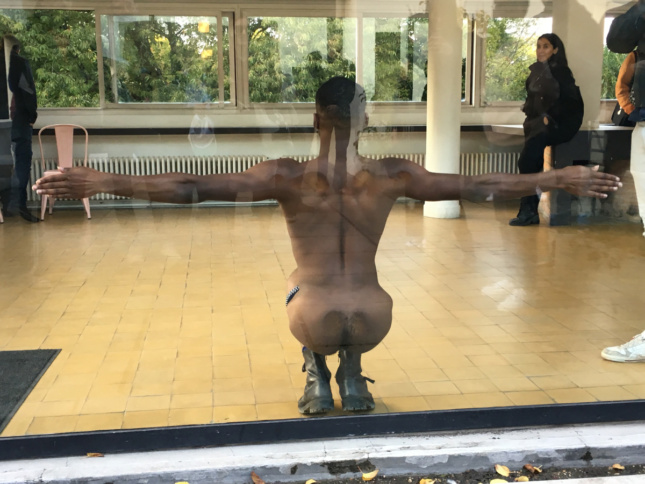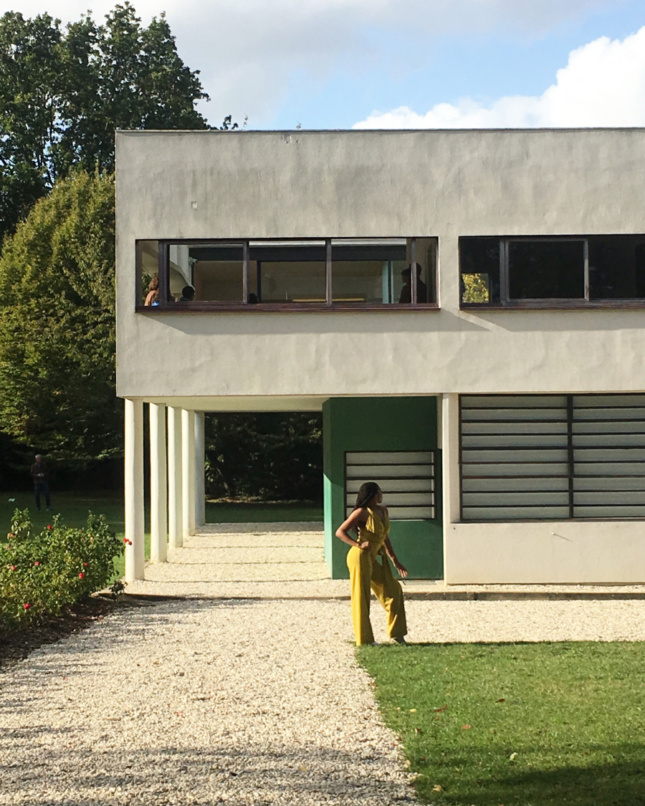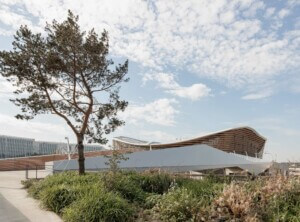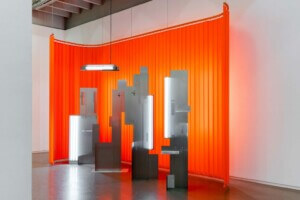Multidisciplinary artists Gerard & Kelly’s Modern Living is a dance performance that has been presented in a series of famous modern houses, including Philip Johnson’s Glass House, the Schindler House, and Mies Van der Rohe’s Farnsworth House. This dance troupe cavorts through the spaces of each house to explore, in their words “intimacy and domestic space within legacies of modernist architecture.” There is additionally an emphasis on an exploration of “queer space,” where voyeurism and exhibitionism are uncovered through the interaction between the dancers through the transparency of the rooms they explore.
The latest incarnation of Modern Living ran from September 28 through October 6 in Le Corbusier’s Villa Savoye, completed in 1930 in Poissy, a suburb of Paris. Probably his most famous house, at the time it was an astoundingly radical image of a floating white pavilion elevated on thin columns above the flat lawn below. It is shocking even now, and reminds us of Frank Lloyd Wright’s comment that “human houses should not be like boxes blazing in the sun.” It was a complete rejection of all things Beaux Arts and classical. Where a house was rooted firmly on the ground, this modernist villa hovered above; in place of small windows punched into a wall, it had a continuous horizontal strip of glass; where a gable roof would provide shelter, there is a flat roof terrace of paving and plants. Compared to the excessive ornament of the Beaux Arts, and even contemporary Art Deco interiors such as that of Robert Mallet-Stevens, the Villa Savoye is abstract and stripped bare. The walls are stucco, the only ornament is the occasional highlight of a deeply saturated painted color—architecture is reduced to space, form, and light, the house is essentially as “naked” as the Greek ruins that Le Corbusier admired.
Villa Savoye first appeared in Le Corbusier’s’ Complete Works in grainy black and white photos, with barely any furniture inside. The Savoye family only lived there briefly, complaining that it leaked and was uninhabitable. The interior was seen briefly in a black and white film by Pierre Chenal in 1930 along with other Le Corbusier houses and his urban plan for Paris. It was occupied by the Germans, then the Americans in World War II, and was a derelict ruin used as hay barn until its restoration from 1985-97. Since then, it has been a mysteriously empty shell and absent of dance, even though Le Corbusier’s idea was that architecture is activated by the human presence in a “promenade architecturale,” as one walks through and around the forms and spaces of the house.
In this sense, Gerard & Kelly have finally brought the Villa Savoye to life, in a choreographed work that is inspired in part by the purported affair of Le Corbusier with the singer and dance sensation of the 1920s Josephine Baker. Aboard an ocean liner from Buenos Aires to France, Le Corbusier met the black, American “chanteuse” who had performed in Paris and drew her nude. The Marilyn Monroe of the 1920s, Baker captivated the imagination of Adolf Loos as well, who designed a striped house for her on a corner in Paris, although there is no evidence she ever asked him to do so. Along with Cubism’s inspiration of African masks and culture as in Picasso’s Les Demoiselles d’Avignon, the perceived exoticism of Baker’s singing and dance had injected new life into these two uptight, polemical architects, certainly at odds with Le Corbusier’s Swiss Calvinist background. Baker went on to aid the French Resistance and became a Civil Rights activist, speaking at Martin Luther King’s 1963 March on Washington.

Taking Baker and Le Corbusier as a starting point, Gerard & Kelly’s six dancers glid, slid, sinuously snaked, and danced through the house, beginning at the entry, going up the ramp and spiral stair to the Grand Salon, then up the ramp to the roof terrace. Individually and together, singing and dancing to an insistent drumbeat, they joined to form a conga line through the master bedroom, then back down the ramp to the outside. Alongside the linear activity of the choreography, the dancers alternately formed pairs of male and female, black and white, gay and straight, gesturing to and intertwining with each other in intimate poses in relation to the internal architecture. They sporadically exposed various body parts, baring buttocks and breasts, draping themselves over the seductive curves of the spiral stair, and then outside on the roof terrace.

The dance extracted the essence of the architecture as a magic box of possibility, where the audience and stage oscillate back and forth, creating an electrifying and exhilarating experience. Remarkably, at the end of the last performance, after the light rain stopped, a double rainbow emerged, a tribute not only to Gerard & Kelly’s multi-colored queer themes, but recalling da Vinci’s Vitruvian Man, inscribed within the circle and square, the ultimate symbol of motion and stasis, and the harmony of architecture and humanity.


















